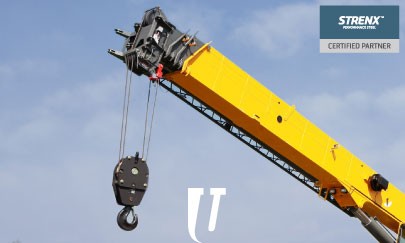Yield strength steel
The elastic limit or also called the elasticity limit, is the maximum stress that an elastic material can withstand without suffering permanent deformations. In other words, it is when a material exceeds a limit when a force is applied to it where it no longer recovers its original shape.
For metals that have a significant straight-line section on the load / strain diagram, the elastic limit is approximately equal to the proportional limit. There are many applications where it is required high elastic limit steels such as: cranes, bridges, docks, building structures etc.
The elastic limit or yield point is the maximum stress that an elastoplastic material can withstand without suffering permanent deformation.
Wikipedia
The elastic limit of a material is usually calculated using Young’s Modulus (longitudinal modulus of elasticity). Young’s module is mathematically defined as the relationship between the applied stress (force per unit area) and the resulting deformation (change in length per unit of original length). This is commonly represented by the letter “E” and is expressed in pressure units, such as pascals (Pa) or megapascals (MPa).
Characteristics of high elastic limit steels
High tensile strength: Offers superior tensile strength compared to conventional steel, making it ideal for applications requiring structural strength.
Excellent strength-to-weight ratio: Despite its high strength, it is relatively light compared to other materials, making it an attractive option for robust but lightweight structures.
Good toughness: Although it is resistant, it retains good toughness, which allows it to absorb energy before fracturing, being useful in applications subject to dynamic loads or impacts.
Weldability: It is generally well weldable with proper techniques, making it versatile in the manufacture of complex structures that require welded joints.
Corrosion resistance: It can offer good corrosion resistance, depending on its composition and surface treatment, being suitable for applications in corrosive environments such as shipbuilding and offshore.
Uses in the high elastic limit steel industry
Civil and structural construction: It is used in the construction of bridges, high-rise buildings,
telecommunications towers and other structures that require a combination of strength and lightness.
Automotive industry: It is used in the manufacture of vehicle chassis, bodies and structural components, as it provides resistance to guarantee the safety of the occupants and the structural integrity of the vehicle.
Aerospace Industry: High-yield steel is used in the manufacture of aircraft and rocket structural components, where a combination of strength and light weight is required to maximize performance and efficiency.
Naval and offshore industry: It is used in the construction of vessels, oil platforms and marine structures due to its corrosion resistance and ability to withstand heavy loads in harsh marine environments.
Heavy machinery: It is used in the manufacture of agricultural machinery, construction and mining equipment, where structural strength is required to withstand heavy loads and severe working conditions.


